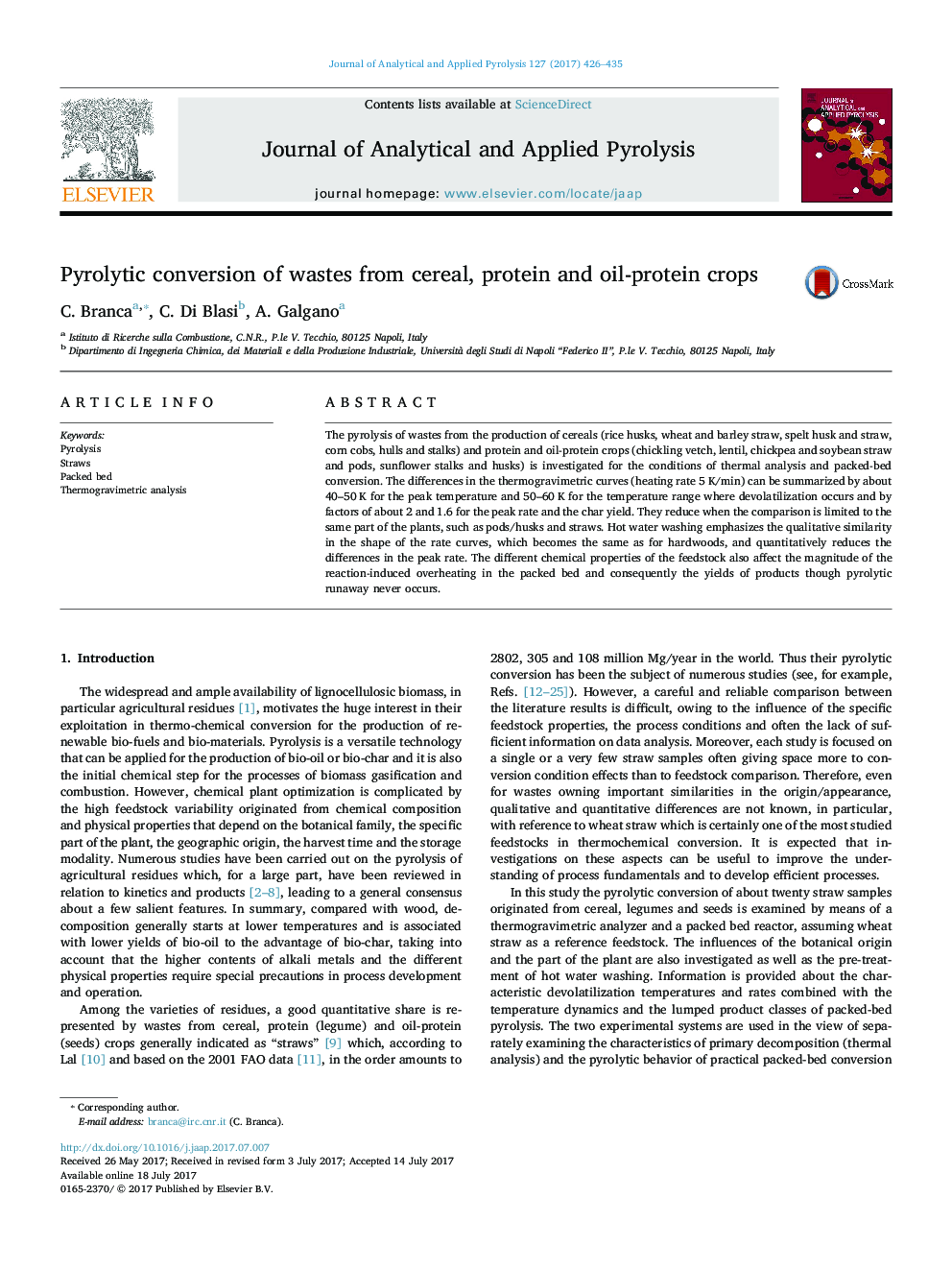| Article ID | Journal | Published Year | Pages | File Type |
|---|---|---|---|---|
| 5134460 | Journal of Analytical and Applied Pyrolysis | 2017 | 10 Pages |
â¢Pyrolytic conversion (TG and packed-bed reactor) of twenty straws is investigated.â¢Differences in the primary decomposition temperatures are around 50 K.â¢The peak rate of the DTG curves varies up to a factor of two.â¢Reaction-induced overheating in packed-bed pyrolysis is affected by the chemical composition.
The pyrolysis of wastes from the production of cereals (rice husks, wheat and barley straw, spelt husk and straw, corn cobs, hulls and stalks) and protein and oil-protein crops (chickling vetch, lentil, chickpea and soybean straw and pods, sunflower stalks and husks) is investigated for the conditions of thermal analysis and packed-bed conversion. The differences in the thermogravimetric curves (heating rate 5Â K/min) can be summarized by about 40-50Â K for the peak temperature and 50-60Â K for the temperature range where devolatilization occurs and by factors of about 2 and 1.6 for the peak rate and the char yield. They reduce when the comparison is limited to the same part of the plants, such as pods/husks and straws. Hot water washing emphasizes the qualitative similarity in the shape of the rate curves, which becomes the same as for hardwoods, and quantitatively reduces the differences in the peak rate. The different chemical properties of the feedstock also affect the magnitude of the reaction-induced overheating in the packed bed and consequently the yields of products though pyrolytic runaway never occurs.
